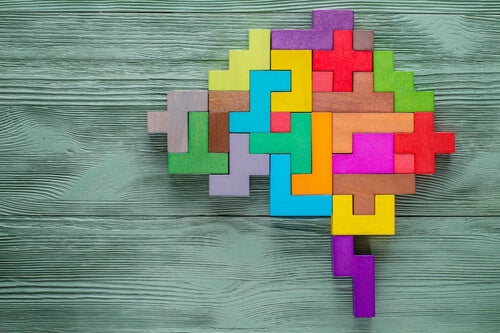Psychopathology and Creativity


Written and verified by the psychologist Isabel Monzonís Hinarejos
The relationship between psychopathology and creativity has been the subject of much interest for hundreds of years. For instance, Aristotle already knew that the most outstanding scientists, artists, and other highly creative people had a tendency to melancholy. In fact, creative people such as Ernest Hemingway, Virginia Woolf, Edgar Allan Poe, Vincent Van Gogh, and Edvard Munch had some form of mental illness and it had to do with their creative process.
Even today, the study of the relationship between psychopathology and creativity remains arduous and difficult.
- First of all, because experts have yet to find a scientific and formal method of measuring something as intangible as creativity to truly learn more about this relationship.
- Second of all, because mental disorders are highly variable. And as they say in the clinical world “there are as many psychoses as there are people”.
- This brings us to the third reason that justifies the difficulty of measuring this relationship. Although there have been many neuroscientific advances, the human psyche still remains a great mystery.
“The problem with the world is that the intelligent people are full of doubts, while the stupid ones are full of confidence.”
-Charles Bukowski-
The study on the relationship between psychopathology and creativity

As a starting point, we can say that the study of the psychopathology and creativity relationship began after the 17th century. This was possible after accepting that the first variable could be susceptible to measurement. In other words, creativity was no longer an intangible variable, without the possibility of scientific study.
Authors such as Galton, Silverman, and Brain, among others, postulated from a naturalistic perspective that creativity wasn’t an extraordinary phenomenon but a common one with biological foundations. Although this now seems obvious, it wasn’t yet considered until they came along. In addition, they observed that people with high creative performance often had symptoms of depression or bipolar or neurotic disorders.
However, they soon concluded that this relationship needed more rigorous study, and not only by attending case studies. Since then, there are three ways or methods that study the influence of psychopathology on creativity:
- Through biographical studies of creative people throughout history. The results provided by this method are neither precise nor conclusive. They’re quite interesting, however.
- Analyzing the psychopathology of creative people. Through the application of inventories, scales, and clinical metrics to people in creative professions. The intention is to determine whether or not there’s a higher prevalence of mental disorders. And, if so, under which category to place them (affective or psychotic, among others).
- By studying creativity in psychiatric patients. The basis of this method lies in the principle that’s opposite to the previous one. If the first one looks for psychopathology in creativity, this one seeks creativity in psychopathology. However, the vast majority of research focuses on patients with bipolarity or schizophrenia.
What does neuroscience say about this relationship?

Researchers conducted several neuroscientific studies over the past decades to try to determine a relationship between these two variables.
Although the results are quite diverse – and sometimes even contradictory – they indicate that “there’s an association with mental illness and or obvious behavior disorders” (Escobar and Gómez-González, 2006). In fact, these studies link creativity with alcoholism, suicide, major depression, bipolar disorder, schizophrenia, or cerebral dysfunction deficits (epilepsy, autism, etc.).
However, we could say once again that this relationship is still inconclusive. There’s currently no clear consensus among experts. At the neuroanatomic level, there’s a relationship between creativity and the functioning of the prefrontal cortex, which is responsible for higher cognitive functions. And, also to the limbic system that manages the physiological responses to emotional stimuli. However, experts point out that the key is in the flow of information that “runs” through the brain regions that are involved in creativity.
Thus, we can conclude that, although there’s still a long way to go, creativity is definitely affected in those mental disorders in which the mentioned structures become altered. Even so, mental disorders aren’t a determining factor or enough to be creative.
All cited sources were thoroughly reviewed by our team to ensure their quality, reliability, currency, and validity. The bibliography of this article was considered reliable and of academic or scientific accuracy.
Alfonso, E., & Beatriz, G. G. (2006). Creatividad y función cerebral. Rev Mex Neuroci, 7(5), 391-399.
Chávez, R. A., & del Carmen Lara, M. (2000). La creatividad y la psicopatología. Salud mental, 23(5), 1-9.
Rodríguez-Muñoz, F-J. 2011: Contribuciones de la neurociencia al entendimiento de la creatividad humana. Arte, Individuo y Sociedad, 23 (2), 45-54
This text is provided for informational purposes only and does not replace consultation with a professional. If in doubt, consult your specialist.








